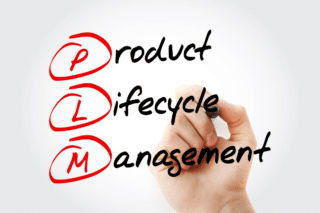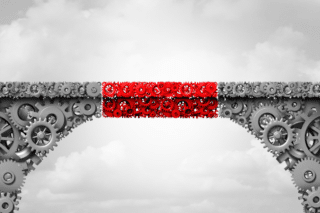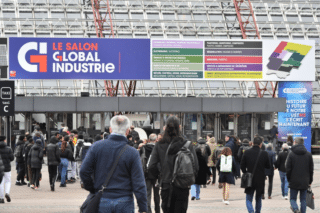As far as companies are concerned, sustainable development is not a peripheral issue that comes a distant second to economic performance. Positioned between the civic behaviors that need to be adopted by individuals, and the policies of the State, companies have a key role to play in moving things forward at a greater pace.
By Olivier Helterlin, Managing Director of PTC France
Companies that do not engage will soon be forced to do so. This is demonstrated by the fact that investment funding is starting to be diverted away from economic players who are not making sufficient efforts in favor of the environment. At the other end of the spectrum, an increasing number of customers are demanding immediate change. Rather than submitting to these phenomena, why don’t companies turn them into an asset? They could empower, mobilize and energize their teams around projects that focus simultaneously on economic performance and sustainable development. This is a major challenge for society.
Industry is Leading the Way
To achieve this, a paradigm change is needed. The best strategy is based on a holistic vision rather than a partial one, which reconciles environmental and economic performance objectives.
Manufacturers will be seeking economic gains associated with:
- the adoption of sustainable products that are more attractive to customers, and are therefore growth drivers;
- enhanced operational performance of production sites, thanks in particular to reductions in quality defects and energy consumption;
- reductions in indirect costs (via reductions in employee travel, lifting of penalties associated with greenhouse gas emissions, etc.).
These economic gains combine with the environmental gains that manufacturers are able to influence. These gains also encompass three main areas of focus: decarbonization of production by reducing direct emissions of greenhouse gases and particles; reduction of energy consumption; and reduction of indirect greenhouse gas emissions, linked in particular to employee travel, commodities, inputs, suppliers, resellers, etc.
The obvious links between economic gains and environmental gains make this an attractive approach. Sustainable development, therefore, requires engineers to think in terms of complete lifecycle management for products and production equipment, from design through to recycling or destruction. Economic and environmental benefits can be gained at each stage in the life of a product – design, manufacture, promotion and marketing, service life, and end of life or recycling.
Companies’ environmental impacts need to be driven down to a level where they become neutral. To facilitate their engagement in the environmental transition, industrial companies can rely on powerful tools such as computer-aided design and augmented reality (AR) software, as well as software that supports the creation of digital twins.
The growing enthusiasm for this approach can be illustrated by means of a few figures. Between May 3rd and May 12th 2021, as part of the “France Relance 2021” stimulus plan, more than 1500 industrial SMEs and mid-tier firms submitted applications for investment support for their transformation to the industry of the future. This represents over a billion Euros in productive investment, including 175 million Euros in aid.
From Design to Eco-design
Without always realizing it, industrial companies who have embarked on the digital transition already have the IT tools that will help them make a success of their environmental transition.
Everything starts as early as the design phase. For several decades now, design offices have used computer-based design software that lets them devise a product or a manufacturing process. Simulation software is then used for virtual testing of physical and logic characteristics under near-real conditions. Thanks to this step, the need to create intermediate prototypes is no longer there, thereby generating savings in materials and energy.
Generative design allows engineers to use algorithms that propose design options for meeting certain requirements, such as the need to reduce the final mass of a product. Generative design dovetails perfectly with additive manufacturing, where the latter is possible. Compared with processes such as machining – which involves the removal of material, and therefore produces waste – additive manufacturing allows savings in terms of materials.
Product lifecycle management (PLM) software also contributes to this positive dynamic by offering a fairly precise degree of visibility and traceability regarding a product’s carbon footprint throughout its lifetime. In the same way, as we can build up the mass of a product, we can also tot up its aggregate carbon score to help engineers design sustainable solutions. PLM software also includes functions that enable compliance with the REACH directive on the use of chemical substances that are potentially hazardous to health and the environment. The choice of less polluting components and materials is not only about meeting legal obligations. It also completes the virtuous circle of design and re-use of sustainable products.
Design methods that incorporate virtual reality, and in some cases augmented reality, are becoming increasingly accessible in financial and equipment terms, allowing designers to connect to a full-scale model of a product, known as a digital twin. Remote access to such models avoids the need for travel, thereby saving energy and time.
Collaborative use of the IT tools listed above reduces product development times, thereby also reducing a product’s indirect carbon footprint.
The design phase also enables simulation of productive systems (manufacturing, storage and intralogistics), process factors (such as energy consumption and the risk of quality defects and scrap), and the role of people in these processes. Simulation of processes supports manufacturers in their digital transition by enabling the design of flexible production lines that can manufacture or assemble different series of products. Making the transition from specialized sites to flexible factories, and relocating if possible, is a key challenge in both economic and environmental terms.
The “eco-design” stage – it’s legitimate to use that term, given the omnipresent nature of the environmental dimension – offers a dual benefit. It optimizes the creation of a product or process and can be a source of savings in terms of materials, energy consumption, and production space. It also supports remote collaborative working, which helps eliminate travel and waste.
Towards More Frugal Production
Operational excellence also involves using connected machines to measure productivity and anticipate failures, compare and optimize the industrial performance of sites, and minimize quality defects.
Minimizing or even eliminating quality defects also brings a dual benefit. It cuts out unplanned machine shutdowns, which are particularly costly, and reduces losses of materials, some of which are very expensive. Model-based design, an IT project management method, allows these phases to be improved via iteration using tools for simulation and optimization of manufacturing processes. Reduced production line operating times and precisely tailored consumption of materials automatically put a brake on increases in energy costs and greenhouse gas emissions.
Combining these solutions with PLM software gives a precise, traceable vision of changes in the installed base of machinery and production equipment.
Connected machines also allow real data on the performance of the manufacturing process (in terms of energy consumption, quality defects, etc.) to be sent back to designers, thereby enabling the necessary corrections to be made to the product or the associated manufacturing process.
Predictive maintenance, meanwhile, will benefit from the use of artificial intelligence. It ensures that operations run smoothly by identifying and analyzing operating defects and failures in materials or processes. This significantly increases operational efficiency, and indirectly helps to make the industry more frugal. Being frugal in terms of materials and energy is good for the planet… and equally good for return on investment.
Eco-responsible Products
The trend towards planned obsolescence and disposable products is being profoundly called into question today. Manufacturers are taking the opposite course by embarking on an eco-responsible approach.
It starts from the design phase, with the development of a product that is easy to maintain throughout its lifecycle. This extends the product lifetime, thereby avoiding overconsumption of the materials and energy required to replace it. Modular design will take things even further, by making products scalable.
Designing products that are compatible with augmented-reality-assisted maintenance techniques (in which disassembly/assembly and even repair instructions are provided using AR technology) will optimize maintenance and reduce the need for dedicated on-site repair facilities and personnel. The concept can be taken to another level via the use of experts to provide remote assistance to inexperienced personnel, also supported by augmented reality.
Connecting products to a database equipped with artificial intelligence capabilities will enable data collected from sensors embedded in the product (via a data transmission network) to be used to proactively address problems before they lead to failures. This will extend product lifetimes.
Linking products to designers’ databases will provide a useful source of feedback. Analyzing the real-life behavior of products will help adjustments to be made to the configurations used in future manufacturing series.
An important rule for eco-designed products is that they must meet the specified needs as closely as possible; no more, no less. A poorly designed product has more chance of failing and generating additional maintenance. However, a product designed above and beyond the specified needs will have consumed more materials and used more components and will require greater effort in terms of maintenance and through-life support.
Information technologies are an effective catalyst for the design and manufacture of less polluting products based on cleaner production practices.
“If you don’t take change by the hand, it will take you by the throat”, as Winston Churchill said. Leaders have a decisive role to play in achieving the successful strategic change that industry needs to make in order to move towards a circular model that mirrors the circular economy.
Industry has been a driver of technical progress and economic development for more than a century, but also a major driver of pollution. With industry now standing at a crossroads, the time has come for it to move beyond this paradox. This is an accessible, feasible objective that can be achieved, starting right now, without adversely affecting growth and performance in the medium and long term.











